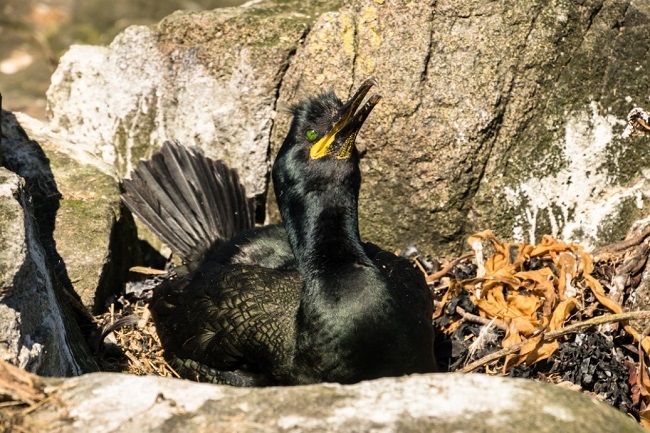Searbird nests are full of discarded plastic debris
Published: 8 May 2020
Researchers have found that plastic debris is incorporated in up to 80% of seabird nests.

Surveys carried out in 2018 on an uninhabited island off the west coast of Scotland found that more than a quarter of all nests contained plastic, while the presence of plastic debris in nests of European shags (Phalacrocorax aristotelis) was as high as 80%. But in other species that build new nests every year, like gulls, only around a third of the nests contained plastic debris.
The large difference between species in the proportion of nests with plastic is probably due to their different nest-building behaviours; shags reuse their nests year after year so plastic builds up over time. The difference between species may also be explained by the way that plastic debris ends up in their nests. Plastic in nests has been identified as being mostly from consumer waste thrown away in built-up areas.
“They end up in seabird nests, not because seabirds actively pick them up in built-up areas and carry them to their nest, but because are brought there passively by marine currents.” says Dr Ruedi Nager, a seabird ecologist and senior lecturer at The Institute of Biodiversity, Animal Health and Comparative Medicine.
Seabird populations are facing a global decline so it is important to understand all the pressures that they face. Seabirds interact with plastic pollution through ingestion, entanglement and nest incorporation. Plastic debris in nests may affect the birds in different ways. It can potentially affect the quality and properties of the nest with detrimental effects for the eggs and chicks.
Plastic in the nest can also lead to fatal entanglement of adults and chicks. Monitoring plastic in nests using photographs to assess the type and quantity of plastic in nests can allow scientists to monitor changes over time as well as tell them where the plastic came from. Identifying the potential sources of plastic can inform conservationists, allowing them to develop management actions, such as targeted beach cleans, which may reduce any negative impacts on our struggling seabird populations.
Full story: https://www.gla.ac.uk/news/headline_722054_en.html
Link to paper: https://www.sciencedirect.com/science/article/abs/pii/S0025326X20301946
First published: 8 May 2020
<< News

